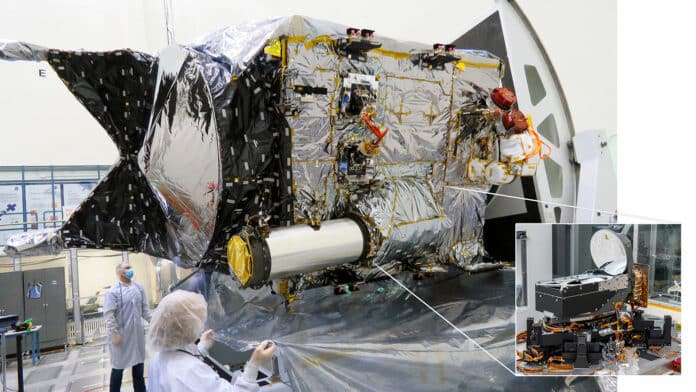NASA is testing technologies in space and on the ground that could one day allow it to transmit more complex science data and even stream video from Mars.
The space agency will launch its Deep Space Optical Communications (DSOC) project this fall to test how lasers could speed up data transmission far beyond conventional radio frequency space communications. DSOC may pave the way for broadband communications that will play an important role in crewed missions to Mars.
The DSOC near-infrared laser transceiver will be fitted on NASA’s Psyche spacecraft. Psyche’s mission of studying a metal-rich asteroid of the same name is scheduled to launch in October 2023.
During the first two years of the journey, the DSOC near-infrared laser transceiver will communicate with two ground stations in Southern California. This will allow NASA to test highly sensitive detectors, powerful laser transmitters, and new methods of decoding the signals sent by the transceiver from deep space.
NASA is currently exploring the potential of laser communication as a means to surpass the limitations of radio waves, which have been used for communication by the space agency for over fifty years. Both radio and near-infrared laser communications rely on electromagnetic waves to transmit data, but near-infrared light packs more data into tighter waves of light, allowing ground stations to receive larger amounts of data at once.
“DSOC was designed to demonstrate 10 to 100 times the data-return capacity of state-of-the-art radio systems used in space today,” said Abi Biswas, DSOC’s project technologist at NASA’s Jet Propulsion Laboratory in Southern California, in the release. “High-bandwidth laser communications for near-Earth orbit and for Moon-orbiting satellites have been proven, but deep space presents new challenges.”
The transceiver riding on Psyche will feature several new technologies, including a never-before-flown photon-counting camera attached to an 8.6-inch (22-cm) aperture telescope that protrudes from the side of the spacecraft. The transceiver will autonomously scan for, and lock onto, the high-power near-infrared laser uplink transmitted by the Optical Communication Telescope Laboratory at JPL’s Table Mountain Facility near Wrightwood, California.
Once locked onto the uplink laser, the transceiver will locate the 200-inch (5.1-meter) Hale Telescope at Caltech’s Palomar Observatory in San Diego County, California. The transceiver will then use its near-infrared laser to transmit high-rate data down to Palomar.
To receive the high-rate downlink laser from the DSOC transceiver, the Hale telescope is fitted with a novel superconducting nanowire single photon detector assembly. The assembly is cryogenically cooled so that a single incident laser photon (a quantum particle of light) can be detected and the time of its arrival recorded. Transmitted as a train of pulses, the laser light would have to travel more than 200 million miles (300 million km).
With more and more missions launching into deep space, NASA aims to improve its communications technology vastly. So, experiments like DSOC will play a crucial role in helping NASA advance technologies that can be used routinely by spacecraft and ground systems in the future.
